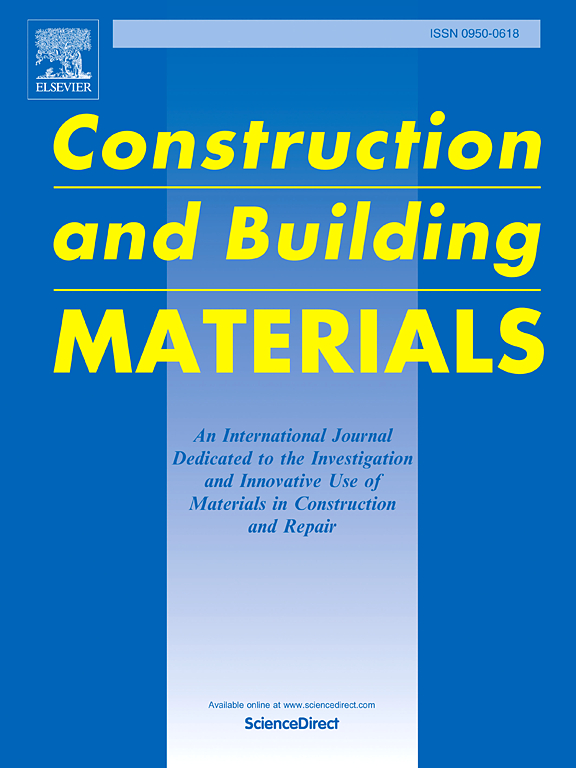Degradation mechanism of cast-in-situ concrete under long-term sulfate saline soil attack
IF 7.4
1区 工程技术
Q1 CONSTRUCTION & BUILDING TECHNOLOGY
引用次数: 0
Abstract
This study investigates the degradation mechanism of cast-in-situ concrete under long-term exposure to sulfate saline soil environments. By designing influencing factors of different salt concentrations (5 %, 10 %, and 15 %), water-to-cement ratios (0.3, 0.4, and 0.5), and cement types (OPC, MSRC, and HSRC), the study examines the appearance deterioration, macroscopic performance degradation, phase composition, microstructural features, and pore structure changes of cast-in-situ concrete under long-term saline soil attack. The results reveal that sulfate attack and the dissolution-leaching of calcium-rich phases are the primary mechanisms driving concrete degradation in saline soils. Notably, higher salt concentrations accelerate degradation processes, making them faster and more localized. Long-term exposure to saline soils causes the porosity of concrete to first decrease and then increase, with significant changes in pore distribution characteristics, and the gel pore growth rate reaching 195.31 %-865.45 %. Microstructural observations further reveal the formation of stratified zones in the concrete, progressing inward from the surface. These zones include a calcite crust, a porous layer, a corrosion product enrichment layer, and a complete area.
求助全文
约1分钟内获得全文
求助全文
来源期刊

Construction and Building Materials
工程技术-材料科学:综合
CiteScore
13.80
自引率
21.60%
发文量
3632
审稿时长
82 days
期刊介绍:
Construction and Building Materials offers an international platform for sharing innovative and original research and development in the realm of construction and building materials, along with their practical applications in new projects and repair practices. The journal publishes a diverse array of pioneering research and application papers, detailing laboratory investigations and, to a limited extent, numerical analyses or reports on full-scale projects. Multi-part papers are discouraged.
Additionally, Construction and Building Materials features comprehensive case studies and insightful review articles that contribute to new insights in the field. Our focus is on papers related to construction materials, excluding those on structural engineering, geotechnics, and unbound highway layers. Covered materials and technologies encompass cement, concrete reinforcement, bricks and mortars, additives, corrosion technology, ceramics, timber, steel, polymers, glass fibers, recycled materials, bamboo, rammed earth, non-conventional building materials, bituminous materials, and applications in railway materials.
 求助内容:
求助内容: 应助结果提醒方式:
应助结果提醒方式:


